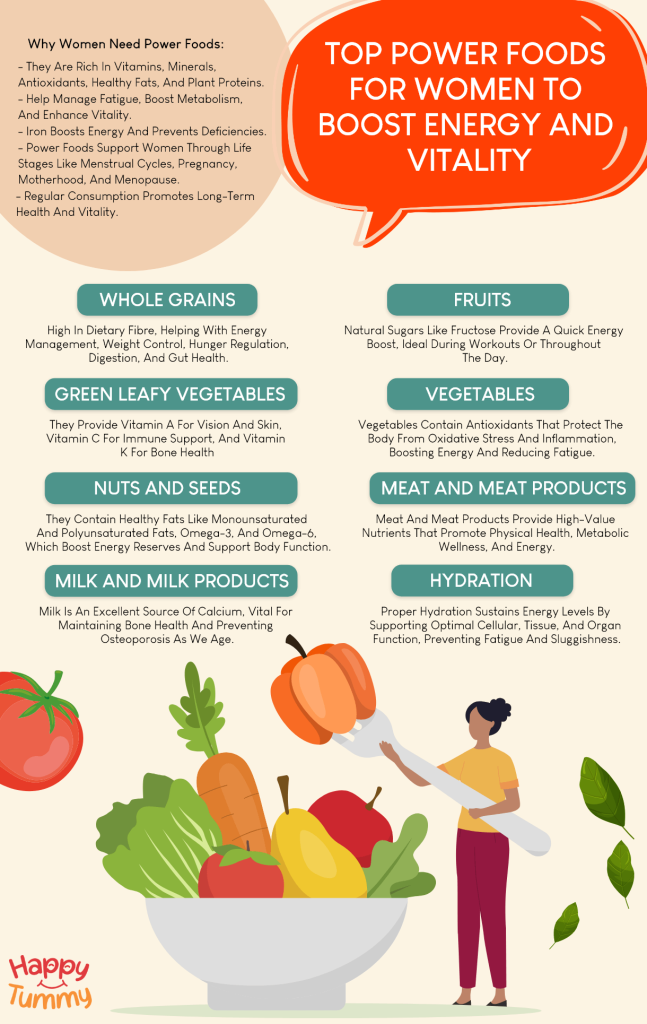In a world where fatigue seems to be the norm, unlocking sustained energy and vitality through nutrition is more crucial than ever. As we move through 2025, with rising demands from work, family, and digital overload, many are turning to science-backed eating strategies to fuel their days without the crash of caffeine or sugar highs. This isn’t about restrictive diets; it’s about smart, balanced choices that support your body’s natural processes, like mitochondrial function—the powerhouse of cells that converts food into energy. Drawing from recent insights, this guide reveals practical secrets to optimize your nutrition, answering questions like “Why do I feel drained mid-afternoon?” and providing actionable steps for lasting pep. Whether you’re an athlete, a busy parent, or someone combating age-related slowdowns, these tips can transform your daily vitality.
The Science Behind Energy: Fueling Your Inner Engine
Your body’s energy production starts at the cellular level, where mitochondria break down nutrients into ATP, the fuel that powers everything from thinking to moving. But modern lifestyles—constant snacking, toxin exposure, and poor sleep—can impair these tiny engines, leading to sluggishness. To counteract this, focus on nutrient-dense foods that provide steady glucose release, rather than spikes that cause crashes.
Balancing Macronutrients for Steady Power
Carbohydrates, proteins, and fats form the triad of energy. Complex carbs like oats and sweet potatoes offer slow-burning fuel, preventing blood sugar rollercoasters that zap vitality. Proteins, from eggs or lentils, repair tissues and stabilize energy by slowing carb absorption. Healthy fats, such as those in avocados and nuts, support hormone balance and brain function—key for mental sharpness.
Action step: Aim for a plate that’s 50% veggies and fruits (for fiber and antioxidants), 25% lean protein, and 25% whole grains or healthy fats. This mirrors the Mediterranean approach, which emphasizes whole foods for sustained energy and reduced inflammation. If you’re wondering about portions, start by tracking one meal a day with a simple app to ensure balance.
Essential Micronutrients: The Hidden Boosters
Vitamins and minerals are the spark plugs for energy metabolism. B vitamins (in leafy greens and whole grains) convert food to fuel, while iron (from spinach or lean meats) transports oxygen to cells—deficiency here often explains unexplained tiredness. Magnesium, found in nuts and seeds, relaxes muscles and combats stress, a major energy thief. Don’t overlook vitamin D; low levels, common in indoor lifestyles, link to fatigue—get it from sunlight or fortified foods.
Practical insight: Test your levels annually via a blood panel. Supplement only if deficient, as whole foods provide synergistic benefits. For example, pair iron-rich foods with vitamin C sources like oranges to enhance absorption, addressing “Why don’t my supplements work?”
Timing Your Meals: The Rhythm of Vitality
Eating patterns matter as much as what you eat. Constant grazing keeps insulin elevated, tiring your system and hindering mitochondrial reset. Instead, opt for smaller, balanced meals spaced 3-4 hours apart to maintain steady energy. Intermittent fasting, like a 12-14 hour overnight window, allows cellular repair and boosts fat-burning for all-day vigor.
Breakfast: Kickstart Without the Crash
Skip sugary cereals; they spike and plummet energy. Choose a protein-forward meal like eggs with veggies and whole-grain toast. This sustains you until lunch, curbing mid-morning slumps.
Recipe idea: Whisk two eggs with spinach, tomatoes, and a sprinkle of feta. Cook into an omelet (10 minutes). Add a side of oatmeal topped with berries for fiber—total under 400 calories, packed with B vitamins.
Lunch and Dinner: Nutrient Powerhouses
Focus on colorful, plant-based plates for antioxidants that fight oxidative stress, a vitality robber. Lunch: Grilled salmon salad with mixed greens, quinoa, and avocado dressing. Dinner: Stir-fried tofu with broccoli, carrots, and brown rice—omega-3s from fatty fish or alternatives support brain energy.
Tip: Prep in batches. Roast veggies Sunday for quick assemblies, saving time while ensuring nutrient intake.
Snacks: Smart Choices for Sustained Buzz
Ditch processed bars; they often hide sugars. Opt for nuts, yogurt, or apple slices with almond butter. These provide protein-fat combos that stabilize blood sugar.
Superfoods and Habits to Amplify Energy
Incorporate these evidence-based picks for an edge:
- Bananas and Oranges: Potassium-rich for muscle function and quick energy without crashes.
- Dark Leafy Greens: Iron and folate for oxygen delivery and red blood cell health.
- Fatty Fish or Seeds: Omega-3s reduce inflammation, boosting overall vitality.
- Oats and Lentils: Beta-glucans and fiber for gut health, which influences 70% of your immune system and energy levels.
Hydration secret: Water is vital—dehydration saps 10-20% of energy. Infuse with lemon for electrolytes; aim for 8-10 glasses daily.
Avoid pitfalls: Limit caffeine post-noon to preserve sleep, and cut ultra-processed foods that spike inflammation. Smoking or excessive alcohol? They deplete nutrients—quitting adds years of vitality.
Integrating Nutrition with Lifestyle for Peak Performance
Nutrition thrives with synergy. Pair eating habits with exercise—30 minutes daily enhances nutrient uptake. Stress management, like mindfulness, prevents cortisol from blocking energy pathways. Sleep 7-9 hours; poor rest impairs glucose metabolism.
For longevity: Embrace unprocessed, nutrient-dense eating to support healthy aging. Track progress: Journal energy levels weekly, adjusting as needed.
Common Mistakes and How to Fix Them
Over-relying on supplements ignores food synergies—eat whole sources first. Skipping meals leads to binges; plan ahead. Ignoring gut health? Probiotics from yogurt aid digestion and energy.
If vegetarian, focus on plant irons with enhancers. For athletes, add carbs strategically.
FAQ
What if I have low energy despite eating well?
Check for deficiencies like iron or B12—get tested. Stress or sleep issues often compound; address holistically.
Can intermittent fasting boost vitality for everyone?
It’s beneficial for many but consult a doctor if pregnant, diabetic, or underweight. Start gently.
How do I make these changes affordable?
Shop seasonal produce and bulk grains. Home-prep saves money—smoothies cost pennies versus store-bought.
Are energy drinks a good quick fix?
No—they mask issues with caffeine and sugar. Opt for natural boosters like green tea.
What’s the role of gut health in energy?
A healthy microbiome aids nutrient absorption; include fermented foods like kimchi for vitality gains.






